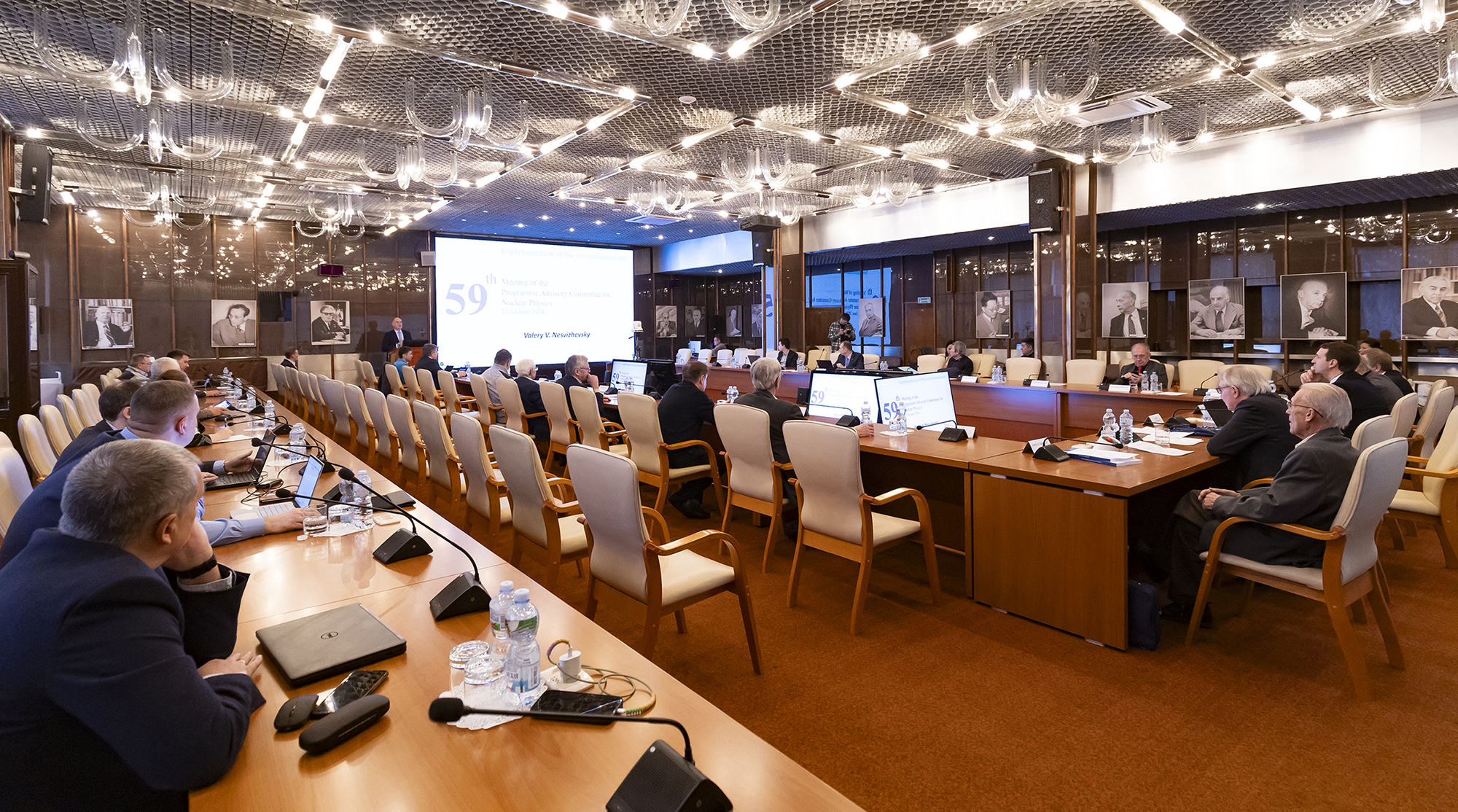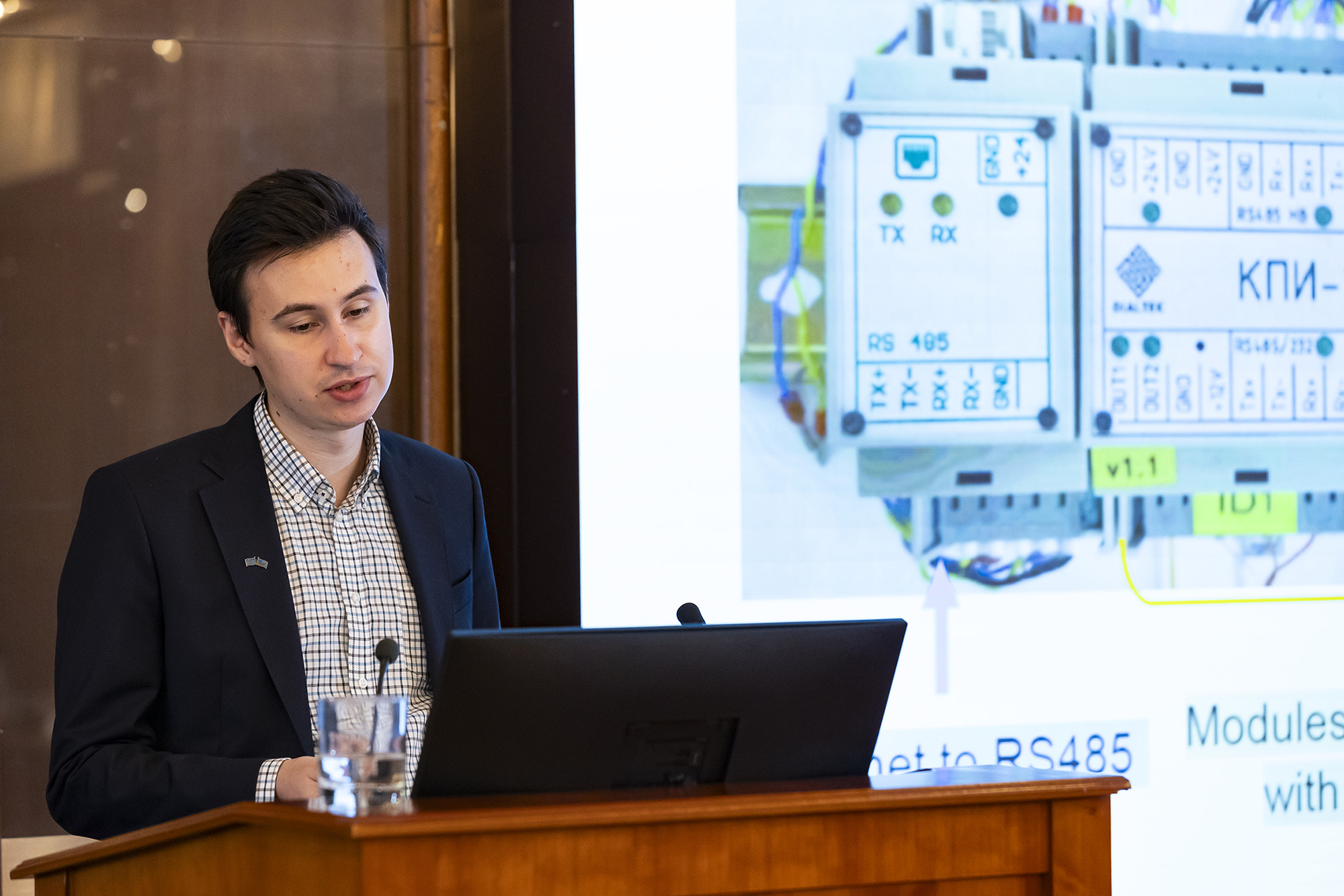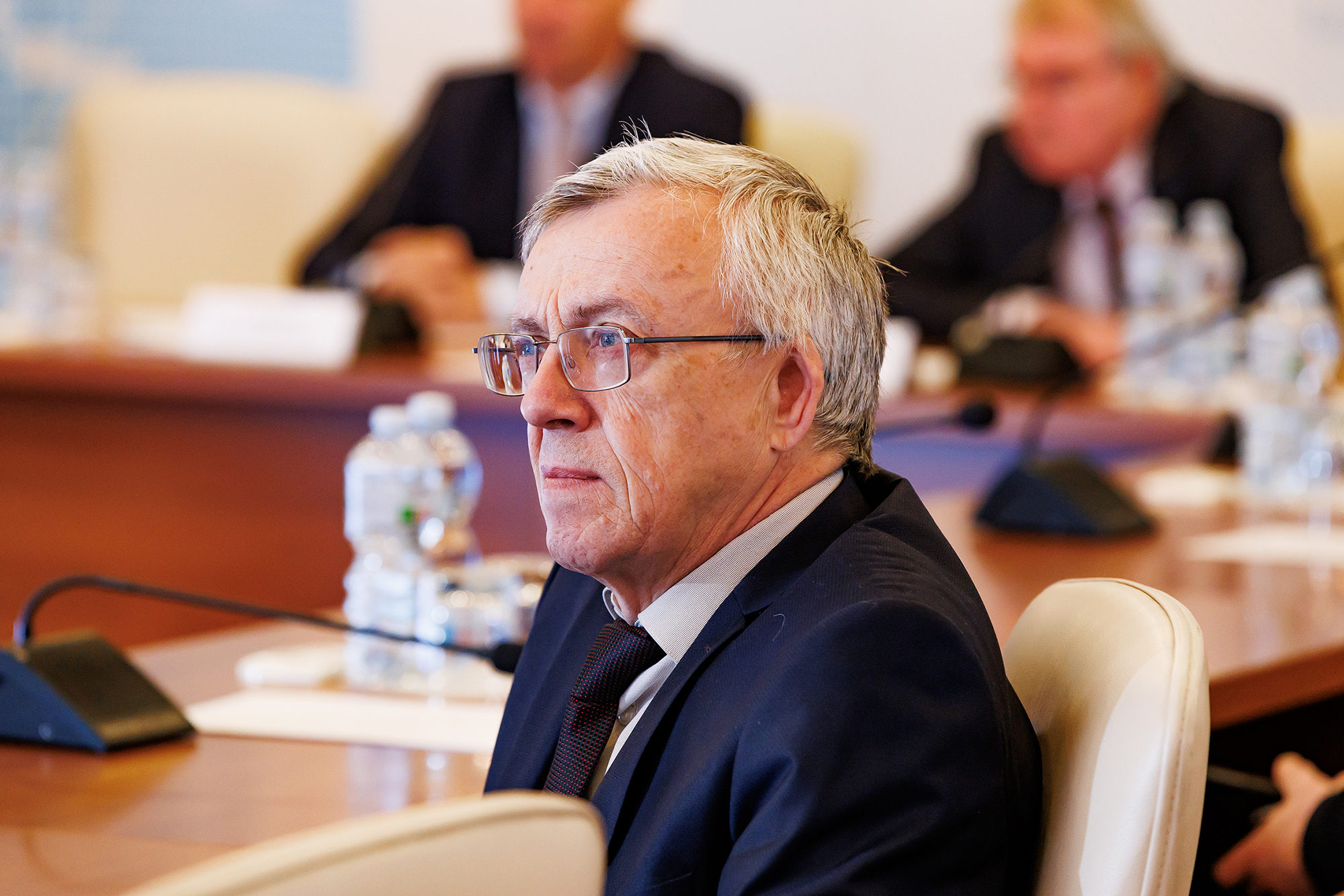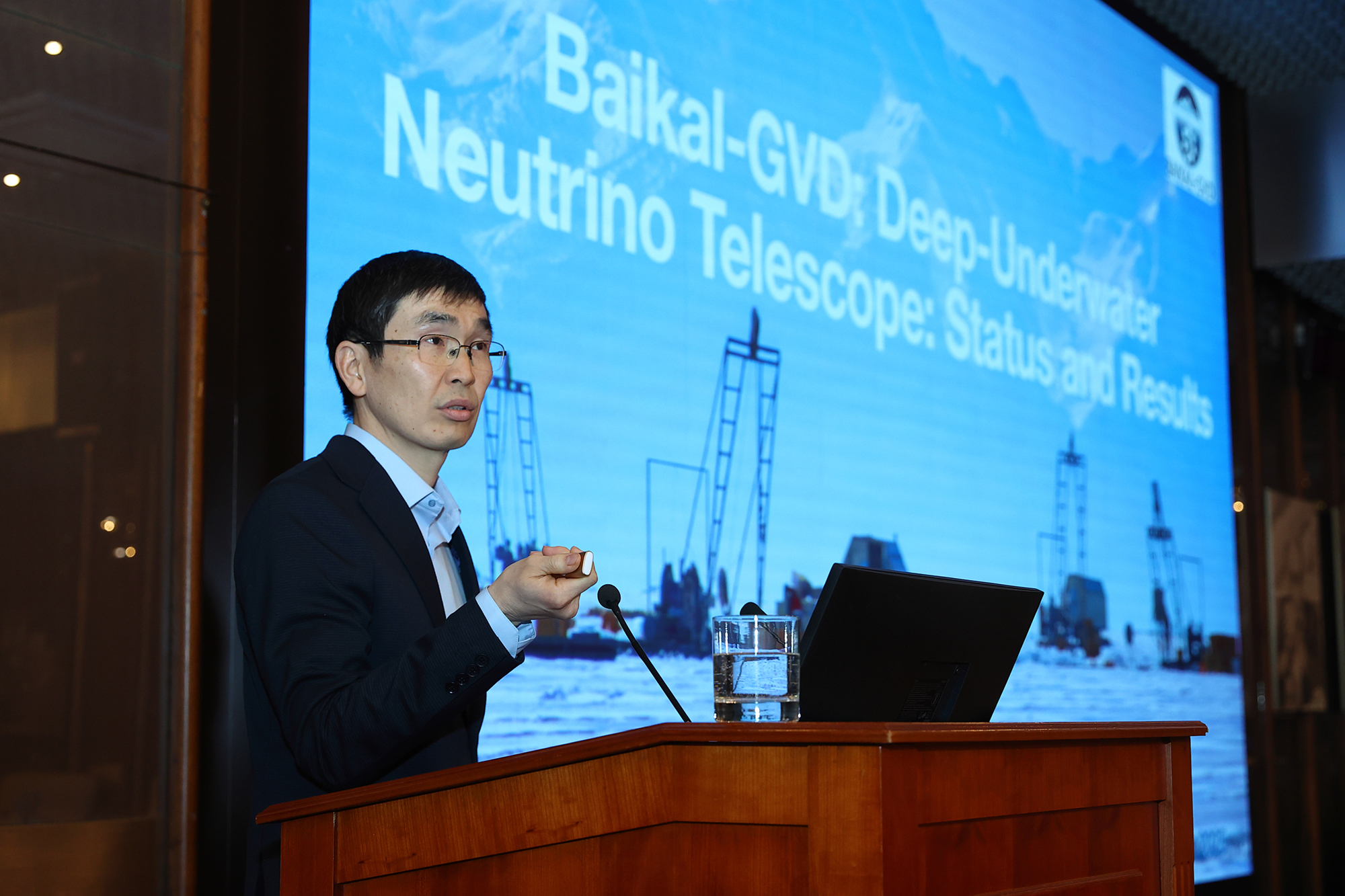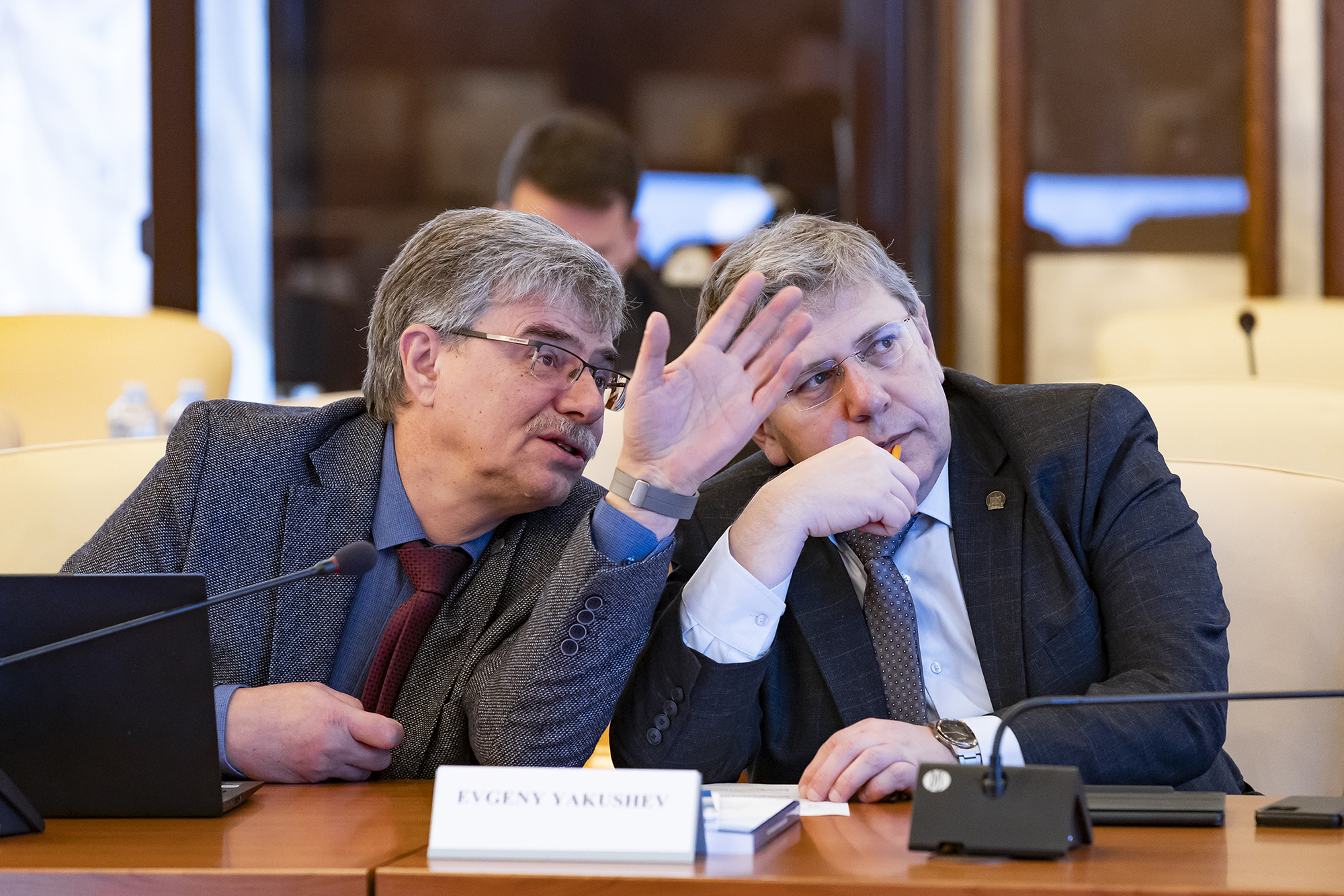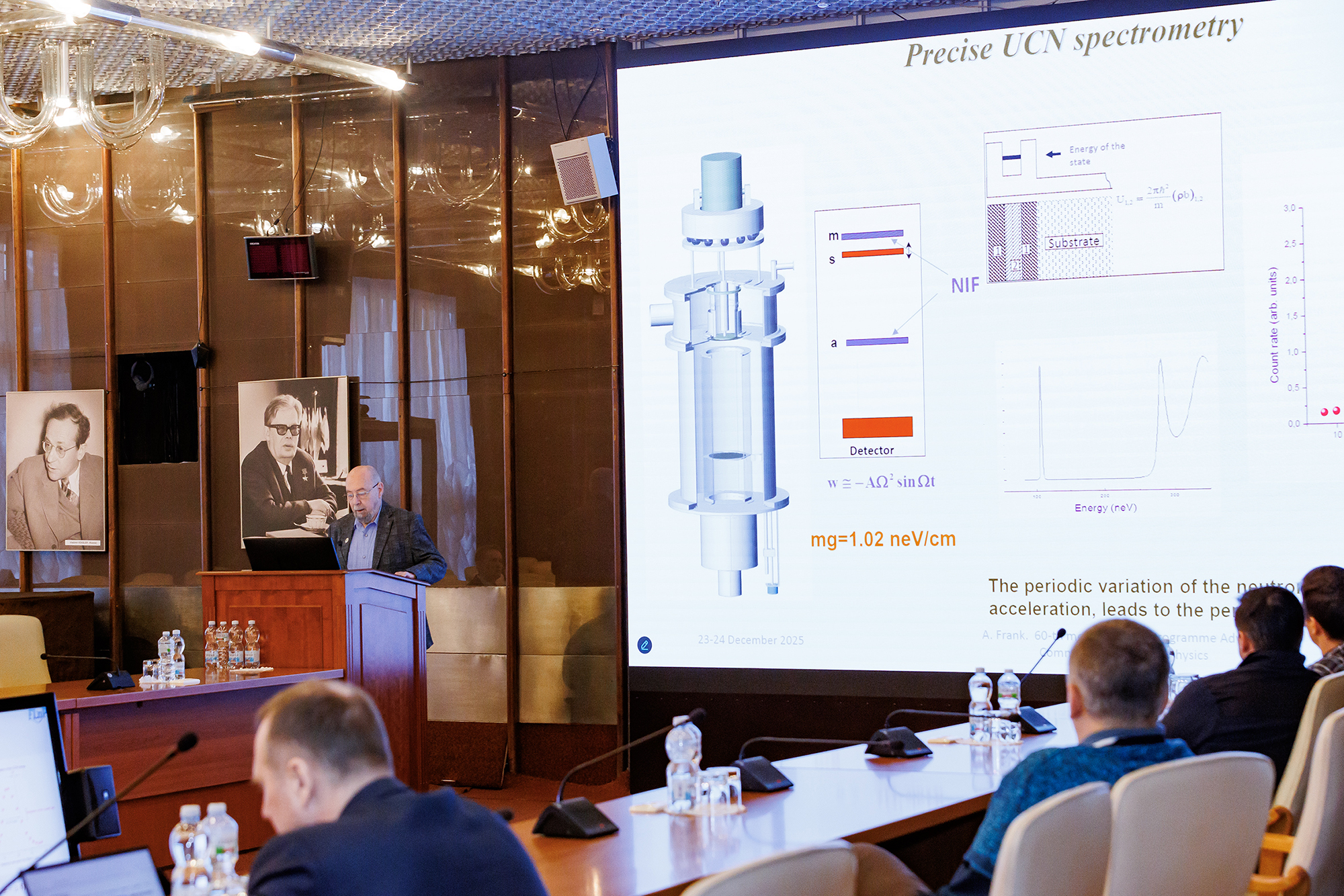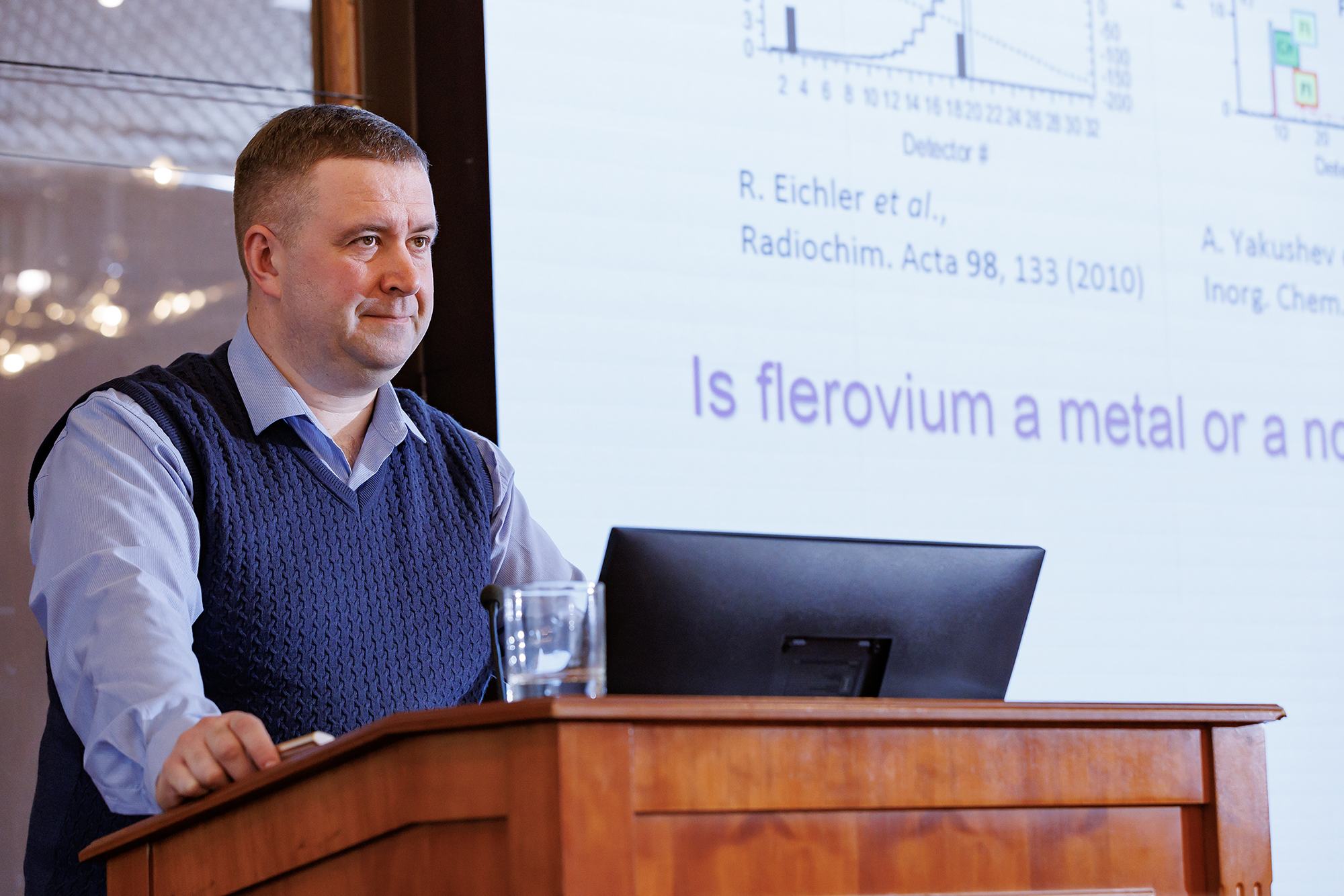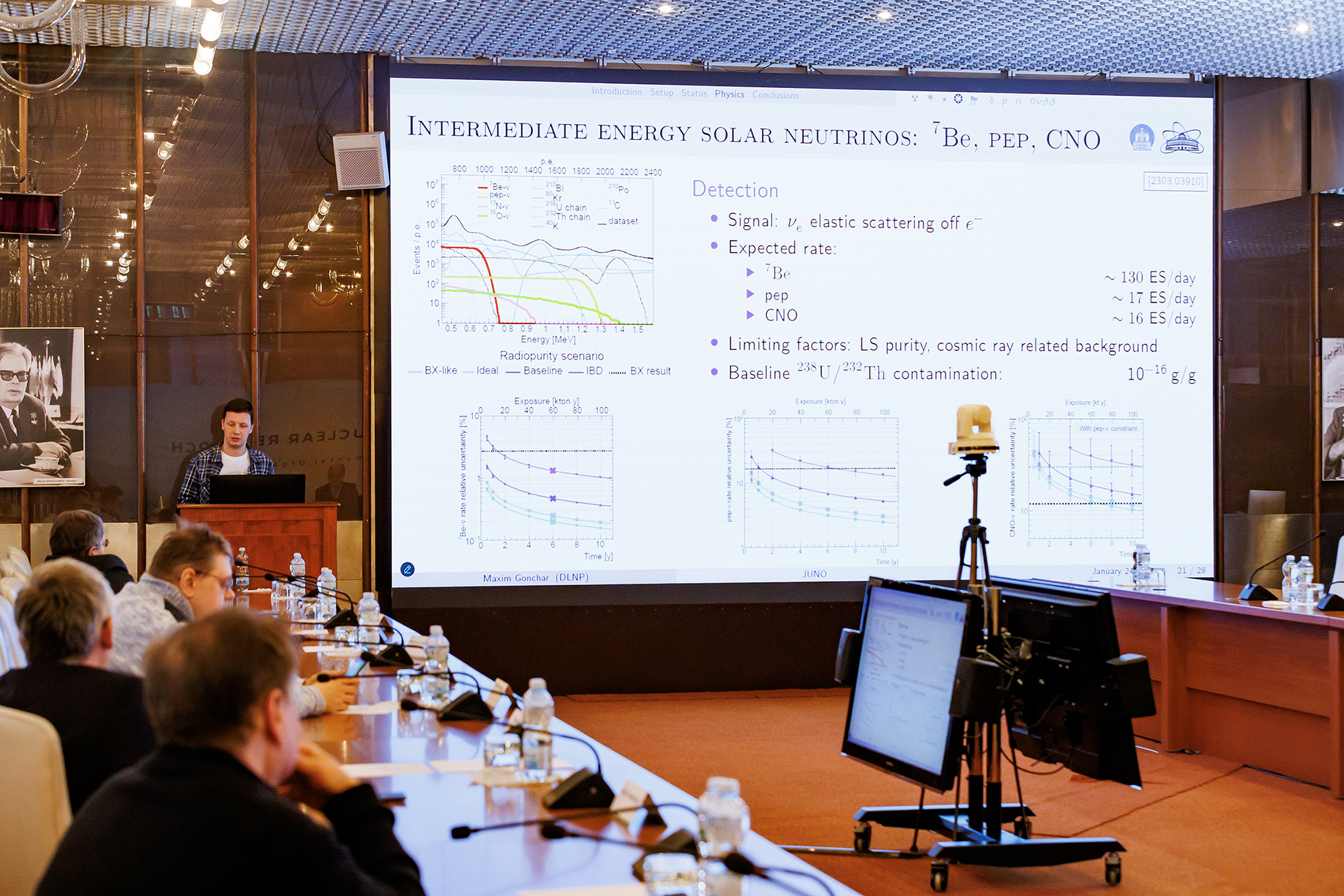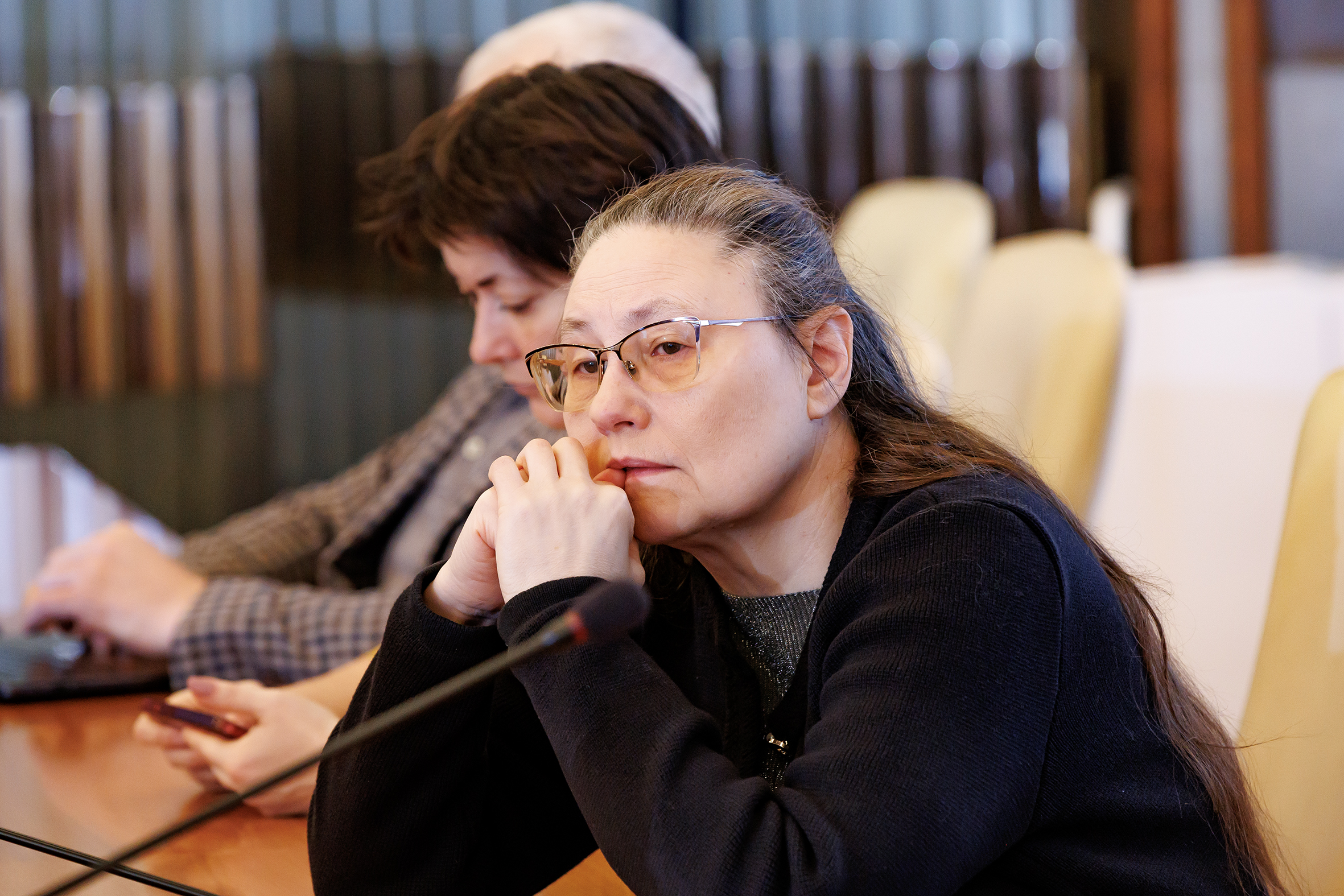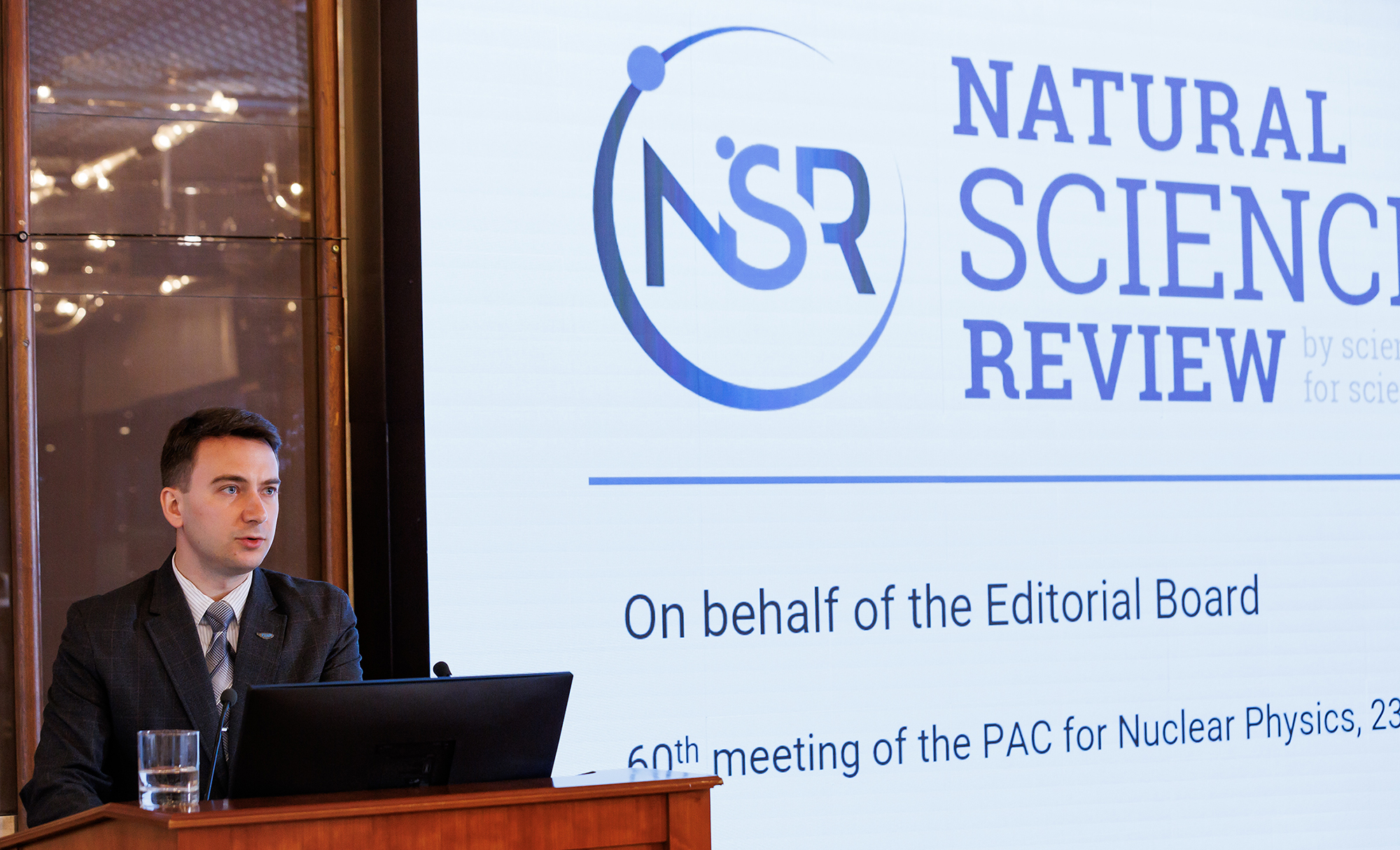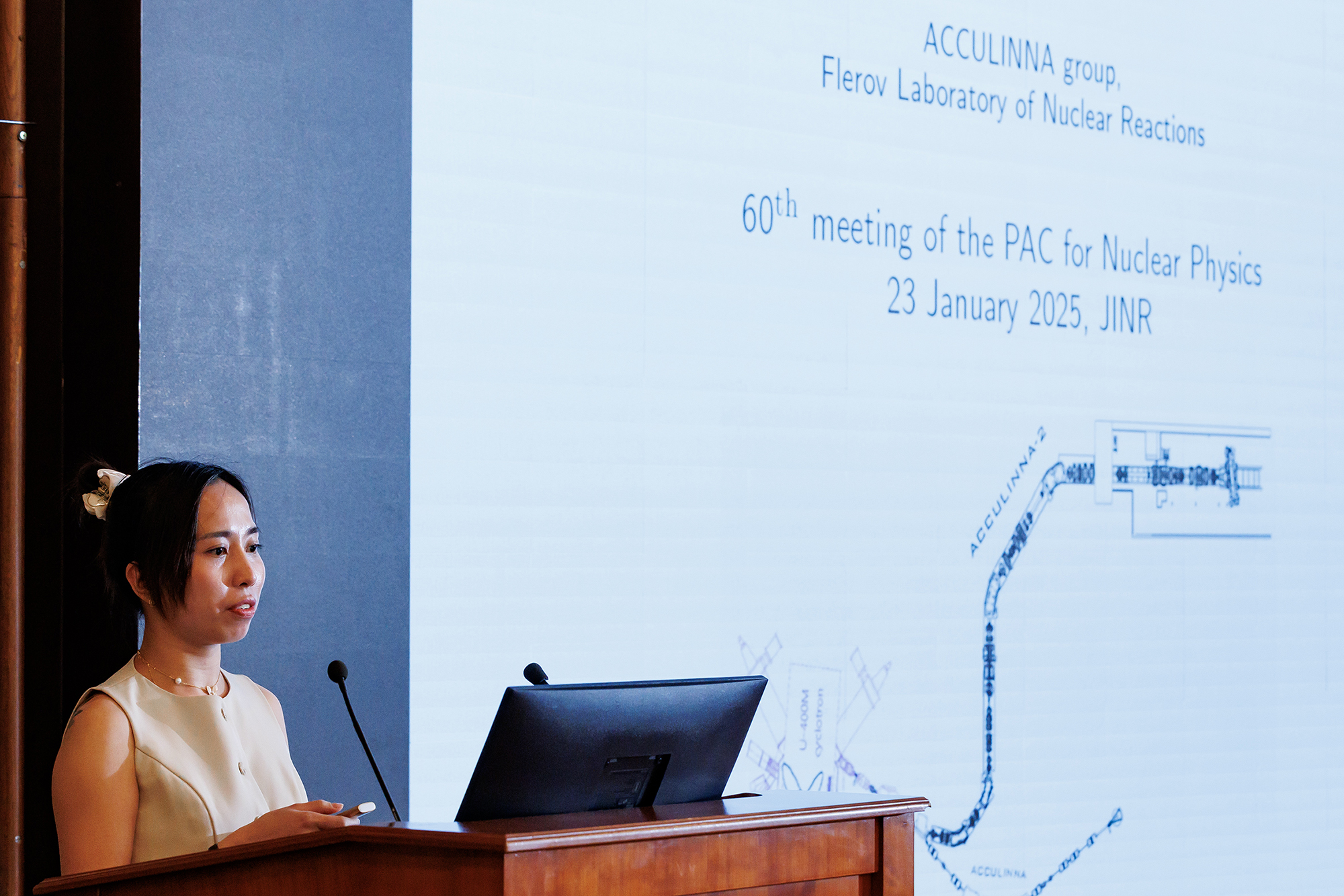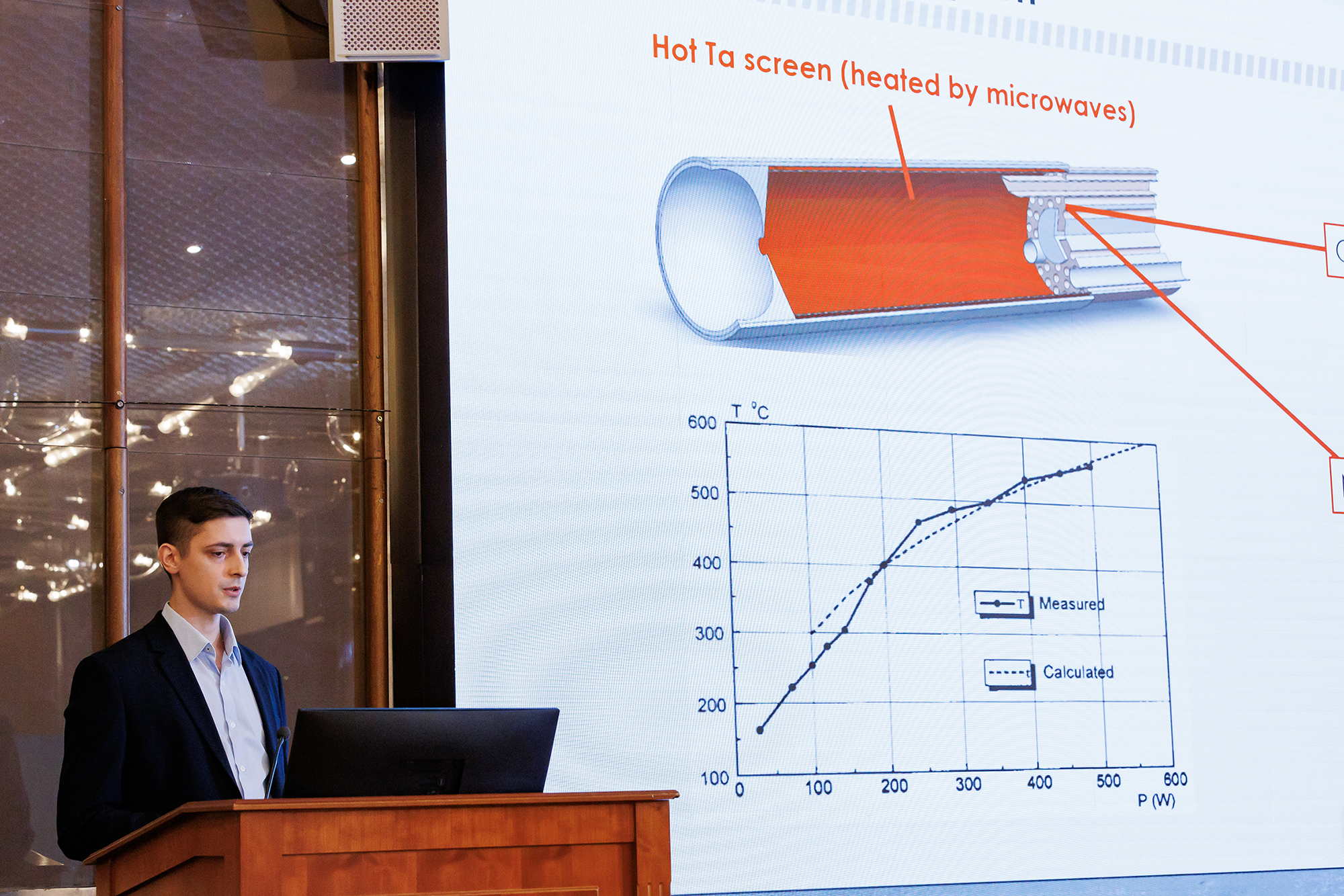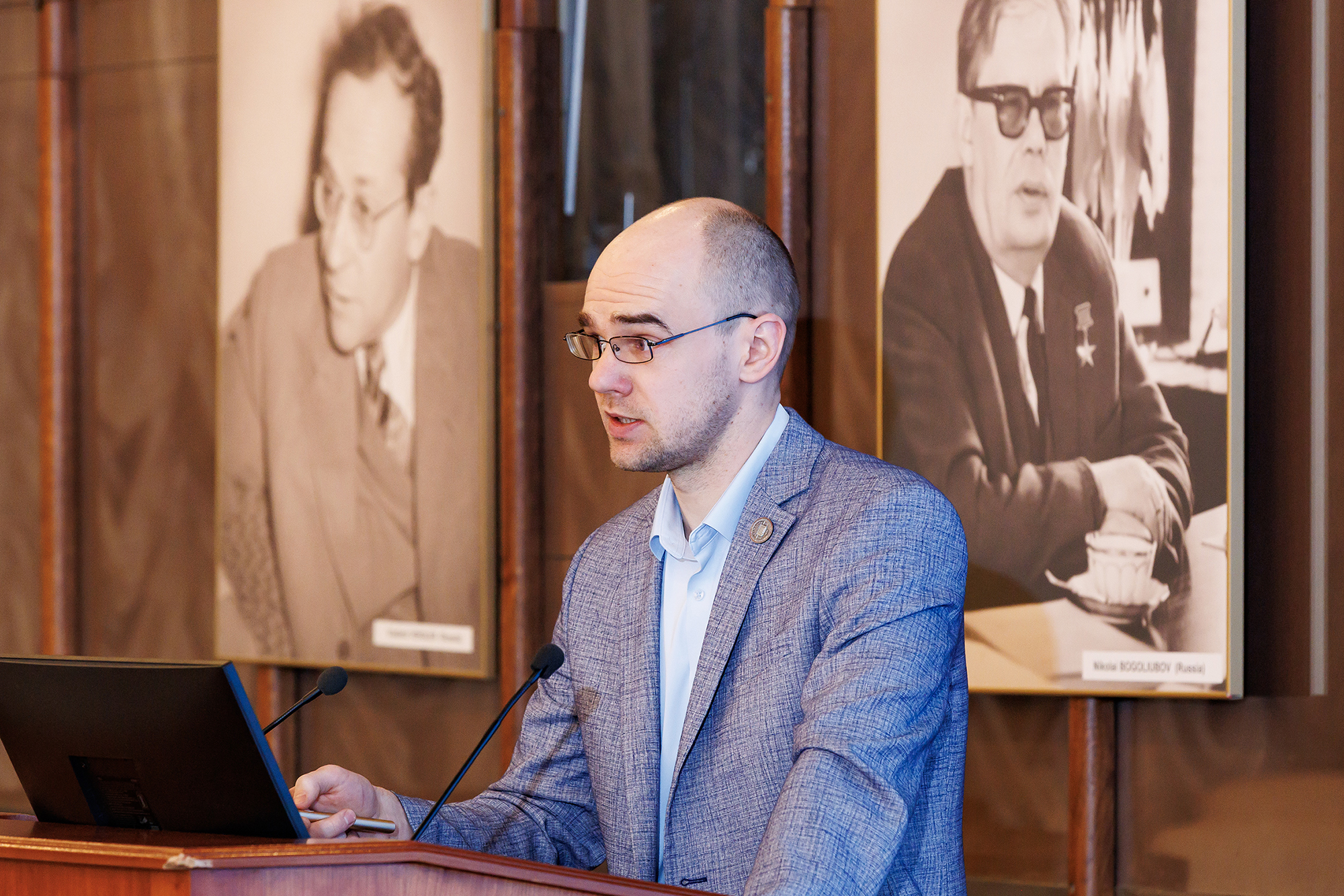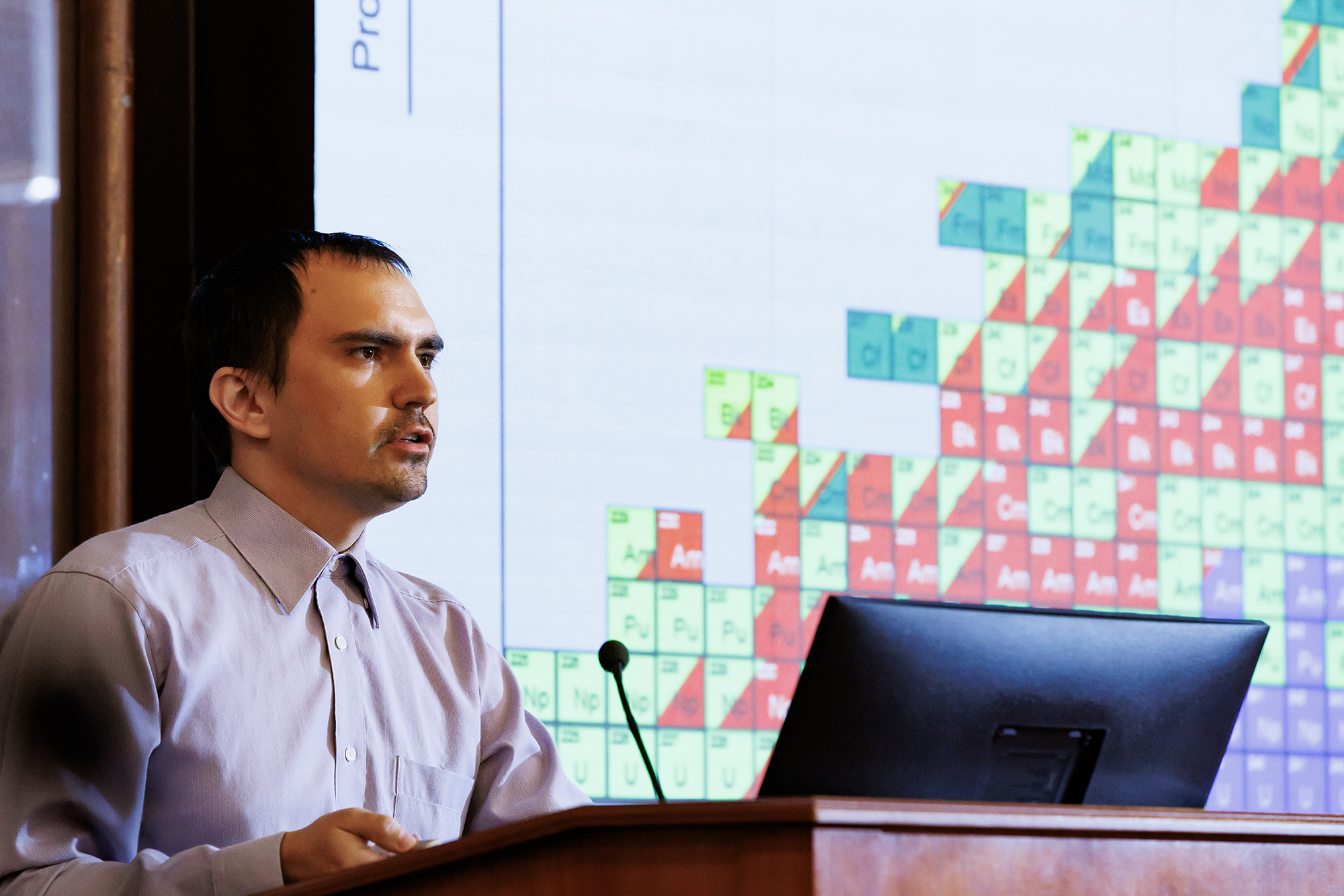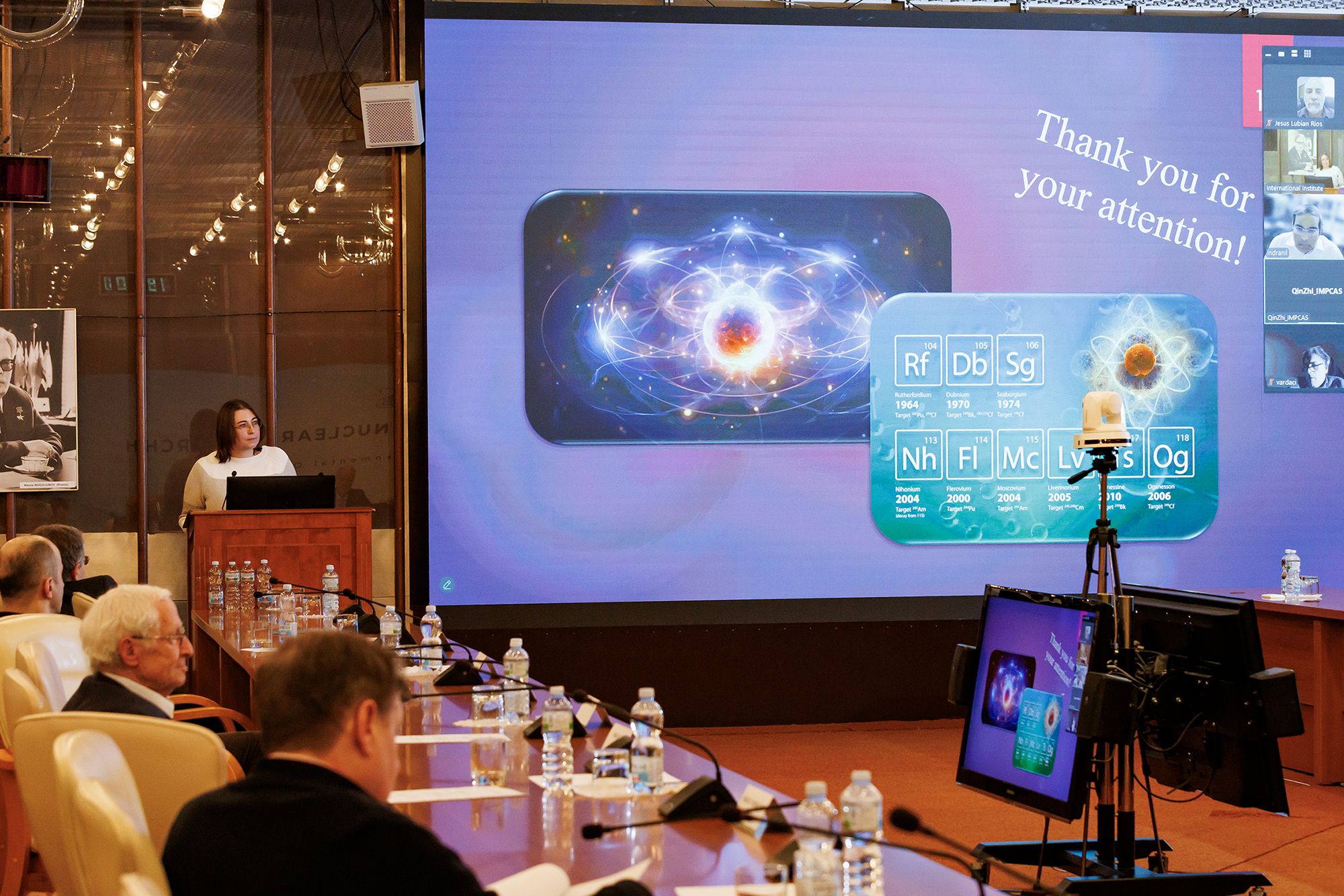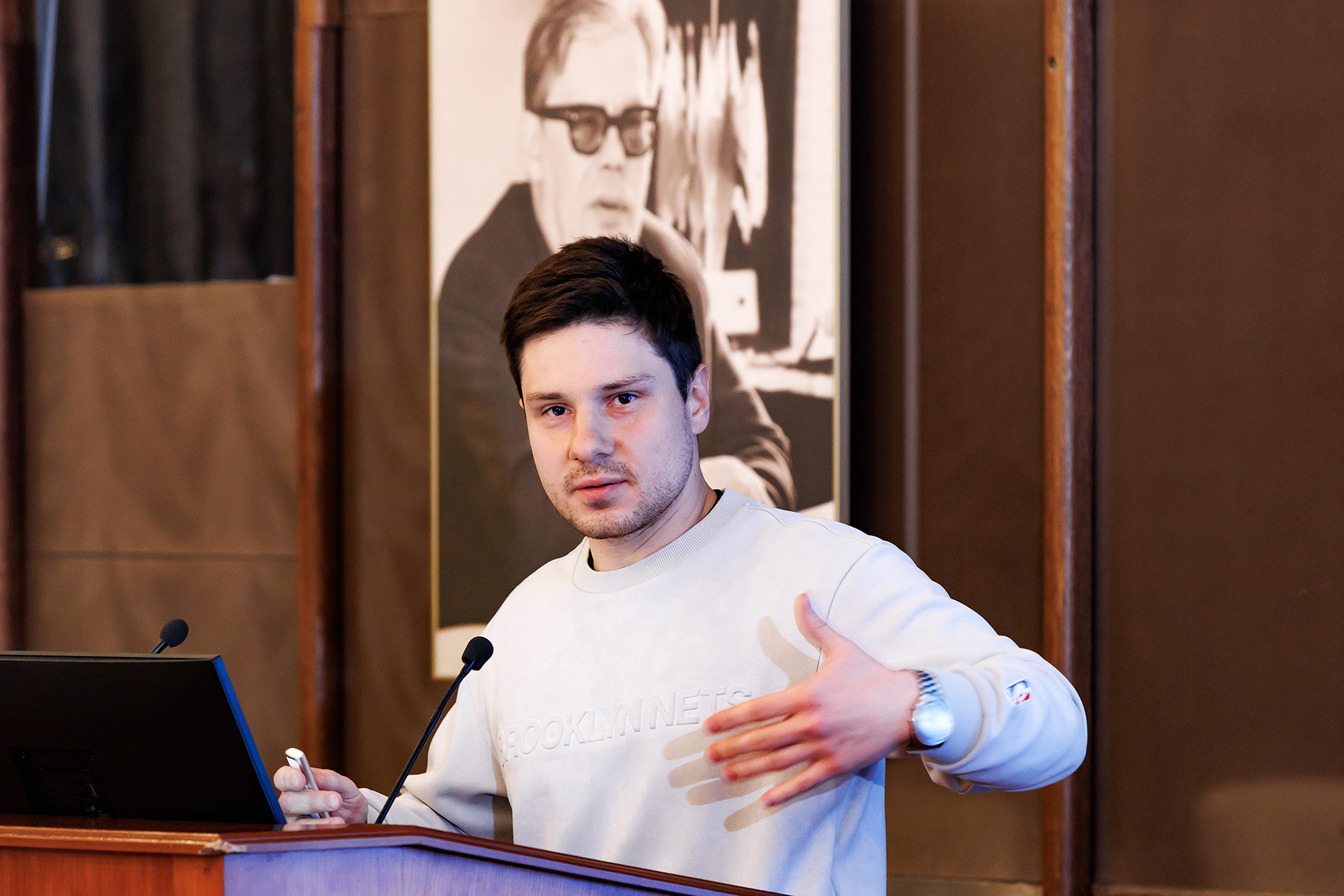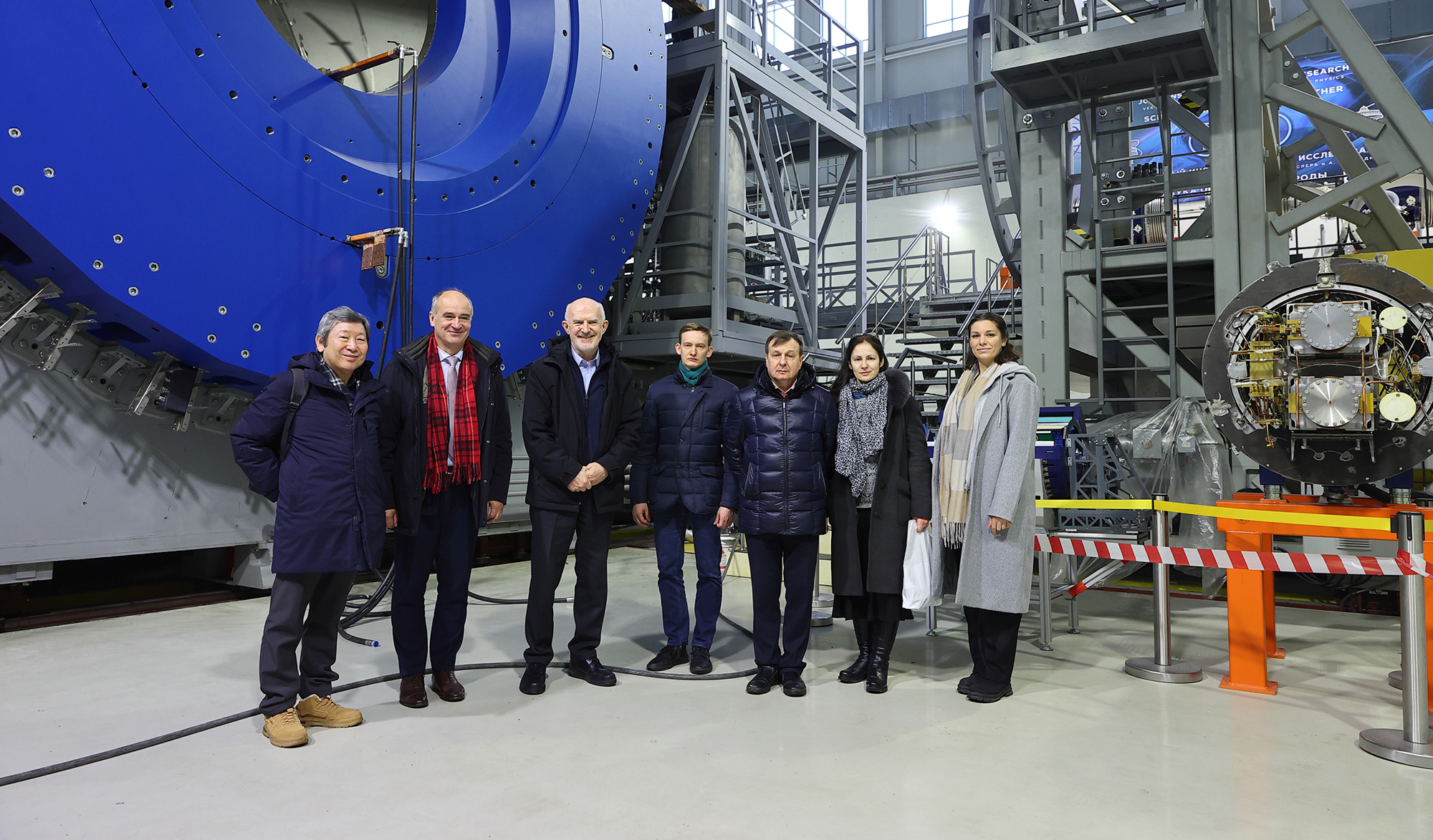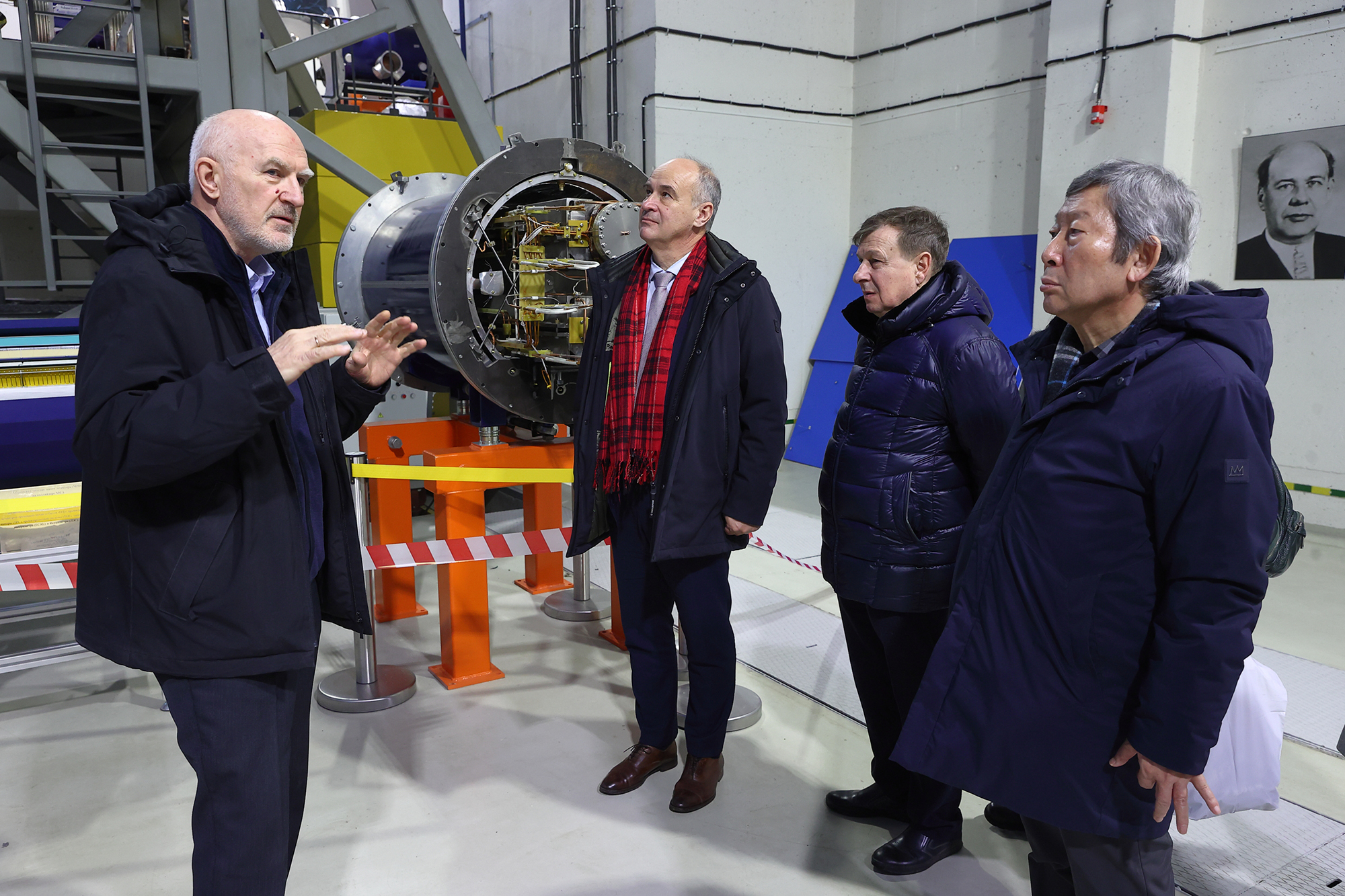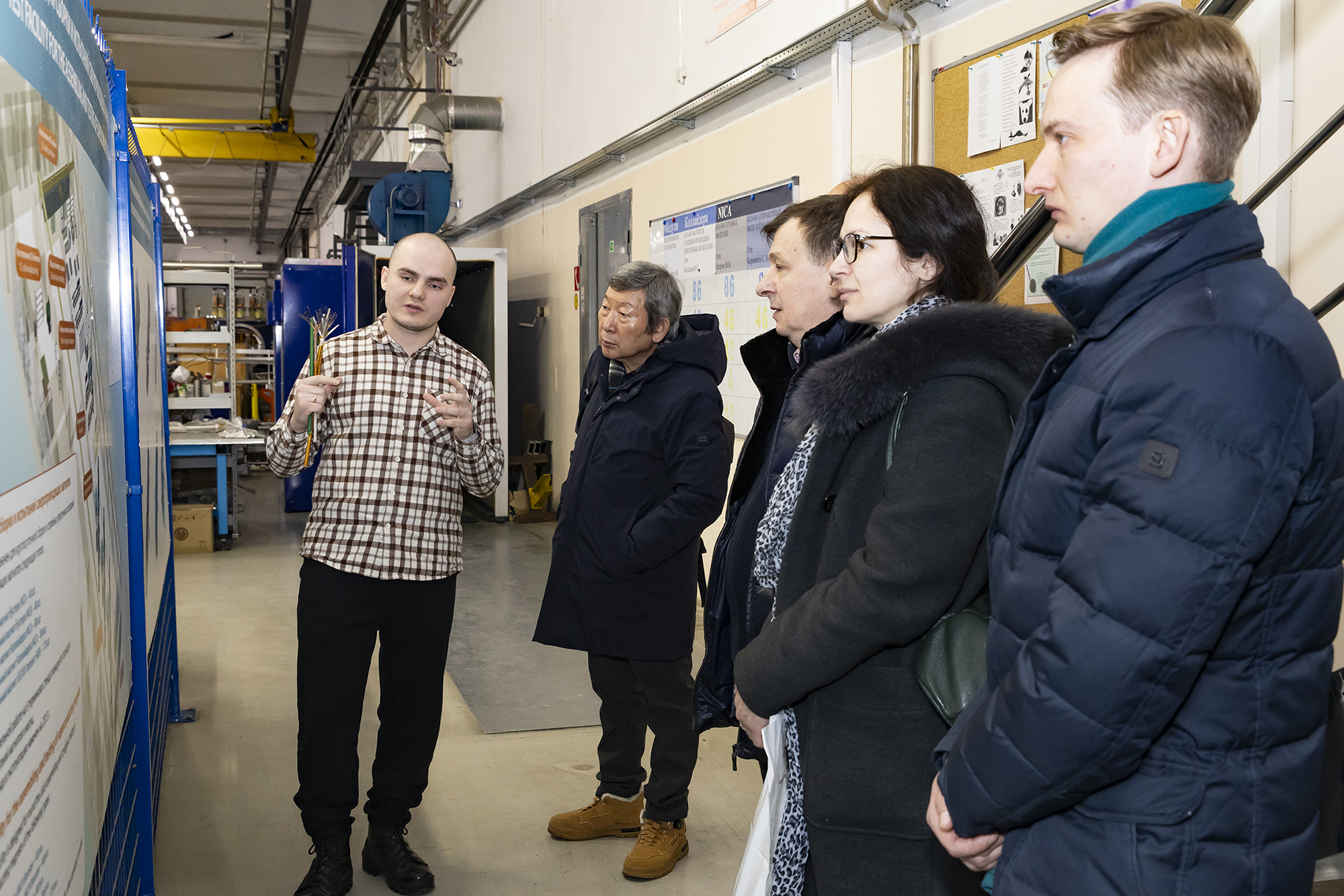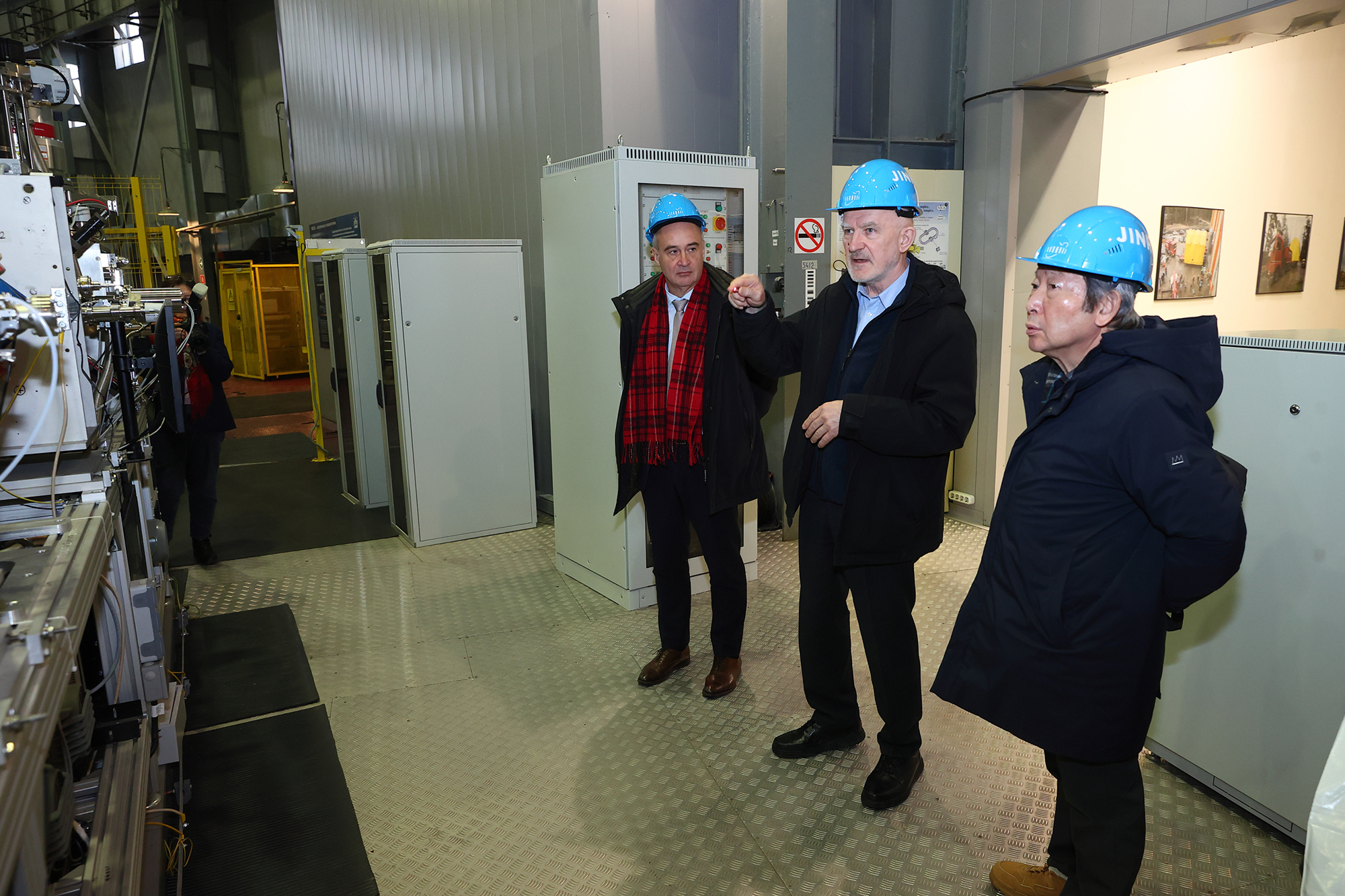PAC for Nuclear Physics: prospects of future experimental research
News, 28 January 2025
On 23–24 January 2025, the JINR International Conference Centre hosted the 60th session of the Programme Advisory Committee for Nuclear Physics (PAC NP). During the meeting, the latest research results in nuclear physics and the state of JINR main facilities and international projects in which Joint Institute employees participate were reviewed. The PAC NP members also visited the Laboratory of High Energy Physics, where they got acquainted with the work progress at the NICA Accelerator Complex.
At the opening of the meeting, PAC NP Chair Valery Nesvizhevsky presented an overview of the implementation of the previous meeting’s recommendations. The PAC members heard a report by JINR Vice-Director Sergey Dmitriev on the Resolution of the 136th session of the JINR Scientific Council (September 2024) and the decisions of the Committee of Plenipotentiaries of the Governments of the JINR Member States (November 2024).
A senior researcher at the Laboratory of Nuclear Problems at JINR Bair Shaibonov talked about the progress and results of the Baikal-GVD Project. Located on Lake Baikal, the largest neutrino telescope in the Northern Hemisphere continues to expand. Currently, the detector consists of 13 clusters of optical modules, the last of which was installed during the winter expedition in 2024. At the same time, together with scientists from the Institute of High Energy Physics (IHEP, China), JINR employees deployed a pilot string with elements and organization of a data collection system for a new generation detector project.
“Despite the difficult weather conditions and slow ice formation, we plan to place two full-scale clusters on Lake Baikal this year, and continue testing new equipment,” Bair Shaibonov said. According to the scientist, the modular design of the detector makes it possible to obtain physical results at the stage of the facility construction already. One of the most notable recent achievements is the independent confirmation of the observation of an astrophysical diffuse neutrino flux by the IceCube telescope with a statistical significance of 5σ.
In addition, the Baikal-GVD Сollaboration detected a rare neutrino event with an energy of 224 ± 75 TeV in the direction of the bright blazar TXS 0506+056, from which a neutrino with an energy of 290 TeV was previously detected by the IceCube observatory employees. The probability of its astrophysical origin is estimated by scientists at 97.1%. This result confirms previous assumptions that radio blazars in general are sources of high energy neutrinos. Progress in the analysis of track neutrino events was also noted. From the data for the period from 2021 to 2023, about 2,613 track neutrino candidates were identified, including 33 events with an energy of more than 60 TeV and 20 events with an energy exceeding 100 TeV. The analysis of the obtained data continues. The construction and modernisation of the Baikal-GVD Deep Underwater Neutrino Telescope is scheduled to be completed in 2027-2028.
A researcher at the Sector of Electronics and Data Acquisition Systems at the Laboratory of Nuclear Problems Alexey Trifonov spoke about the state of the LINAC-200 Linear Accelerator. The DLNP’s main facility is based on the reconstructed MEA accelerator, transferred to JINR from the National Institute of Subatomic Physics (NIKHEF, the Netherlands). During his talk, Alexey Trifonov said that the main subsystems of the facility were redesigned or deeply modernised.
The main goals of the LINAC-200 Accelerator are related to the implementation of a broad JINR research programme:
- scientific and methodological work on the development of elementary particle detectors supporting experiments at NICA and possible external experiments;
- experiments in nuclear physics;
- scientific and methodological work on the search for new approaches and the creation of equipment for the diagnosis of an electron beam;
- applied research in radiation material science, radiochemistry, and radiobiology;
- education and training of specialists.
In 2024, the accelerator interlock and alarm system and automatic radiation control system were completed. Beam absorbers were designed and installed in the LINAC-200 Accelerator Hall. The documentation necessary for the commissioning of this facility is currently being completed. According to Alexey Trifonov, the accelerator is being prepared for commissioning this year. With the start of commissioning, scientists will have the opportunity to conduct research using electron beams with an energy in the range of 5-200 MeV and a pulse current of electrons in a bunch up to 80 mA. It is planned to expand the beam energy range to 400 MeV by 2026.
Head of the Sector of the Formation Reaction and Structure of Heavy Nuclei at the Laboratory of Nuclear Reactions Alexandr Svirikhin presented the latest results of research conducted at the Superheavy Element Factory at FLNR at JINR using the GRAND Gas-Filled Separator. In 2023, the separator was equipped with the upgraded GABRIELA Detection System, which ensured high efficiency in detecting gamma rays. This provided FLNR employees with wide range of opportunities to study the chemical and physical properties of superheavy nuclei. During the recent experiments aimed at researching complete fusion reactions leading to plutonium and nobelium isotope synthesis, scientists obtained new data on the radioactive decay of these isotopes.
The future research programme includes experiments aimed at studying the chemical properties of flerovium and copernicium at the Cryodetector Facility, which uses GRAND as a pre-separator. The changes made to the design of the detection system and its ability to operate at an increased ion beam intensity will allow detecting dozens of flerovium atoms and daughter nuclei during an experiment lasting about a month.
A senior researcher at the Laboratory of Neutron Physics at JINR and Executive Secretary of the Editorial Team of the new JINR scientific journal Alexander Nezvanov presented information about the journal on behalf of his colleagues. In accordance with the recommendations of the Committee of Plenipotentiaries of the Governments of the JINR Member States, a new international online peer-reviewed scientific journal specialising in natural and technical sciences, Natural Science Review, was established at the Joint Institute in the summer of 2024. The Editorial Board of the journal is headed by Victor Matveev (Editor-in-Chief) and Elena Kolganova (Deputy Editor-in-Chief). The Editorial Board and the International Scientific Advisory Board of the journal include leading scientists from many countries.
The journal is open-access, free for both readers and authors. Alexander Nezvanov noted that this allows attracting a far wider audience and accelerating the dissemination of scientific knowledge.
The journal is scheduled for quarterly releases in English. The first issue was published in December 2024 on the journal’s official website, nsr.jinr.int. Submission of materials for future issues is open. The Editorial Board accepts not only original scientific articles and reviews, but also other results of intellectual activity, such as technical reports, program codes, etc.
“The future development of the journal includes its indexing in large bibliographic databases (Web of Science, Scopus, Higher Attestation Commission, and RSCI) and full-fledged entry into the international arena,” Alexander Nezvanov outlined the plans. “We believe that the journal has every chance to become an authoritative scientific publication that the Joint Institute for Nuclear Research will be proud of”.
At the end of the first day of the PAC NP meeting, young scientists of the Flerov Laboratory of Nuclear Reactions gave talks. The PAC NP noted the high quality of researchers’ scientific and methodological works and presentations. Four best talks were awarded:
- “Intense metallic ion beams for SHE synthesis” by Dmitriy Pugachev,
- “Experimental study of multinucleon transfer reactions in collisions of heavy nuclei at the CORSET Facility” by Igor Vorobiev,
- “Study of the properties of elements with Z ≥ 100” by Alena Kuznetsova,
- “Possibilities of producing medically relevant Auger electron emitter 195mPt” by Alexander Madumarov.
Dmitriy Pugachev’s presentation was selected for the 137th Scientific Council session set to take place in February 2025.
On 24 January, the PAC members heard two talks by JINR scientists. Chief Researcher of the Laboratory of Neutron Physics Alexander Frank made a presentation entitled “Equivalence principle and acceleration effect”. Head of the DLNP JINR Reactor Neutrino Sector Maxim Gonchar discussed the progress and results of the JUNO Experiment.
The final item of the agenda was a meeting between the members of the Programme Advisory Committee for Nuclear Physics and representatives of the JINR Directorate. At the end of the session, the PAC recommendations were adopted, and proposals for the agenda of the 61st session, which is scheduled for summer 2025, were considered.
